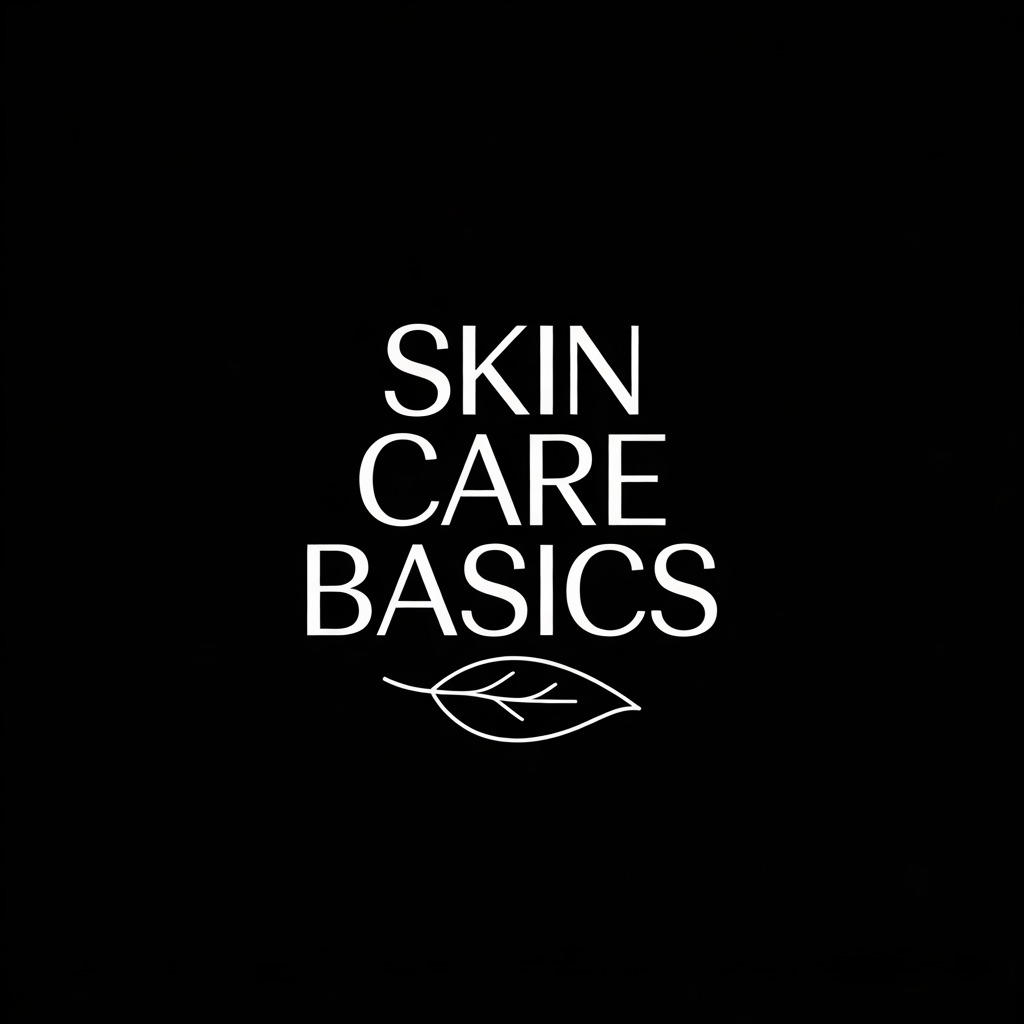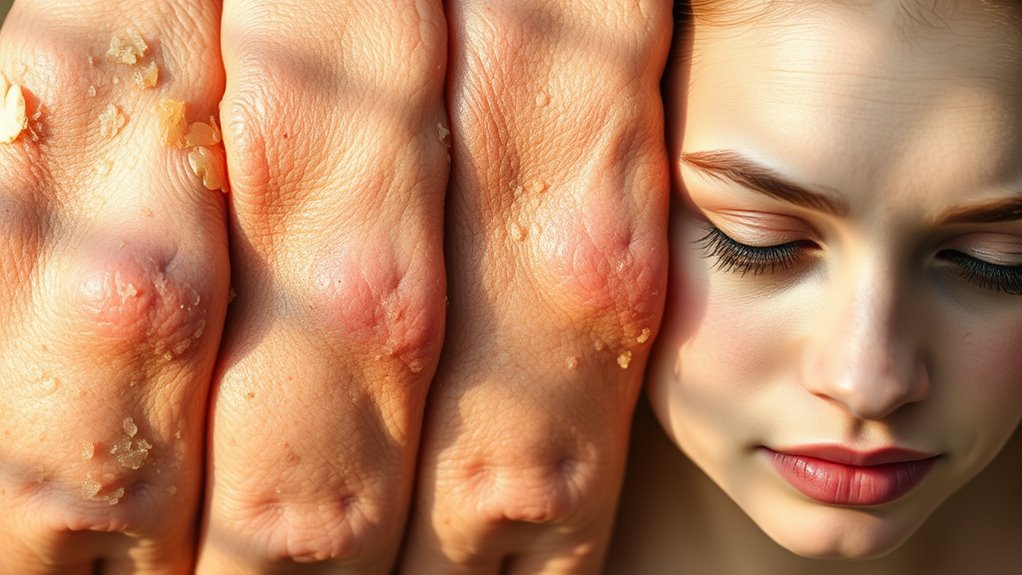What Your Skin Type Says About Your Hormones
Have you ever wondered if your skin type could actually reveal something about your hormonal health? Research suggests that the characteristics of your skin may mirror hormonal balances, providing clues about underlying issues. For instance, oily skin often points to elevated androgens, while dryness might indicate hormonal deficiencies. Understanding these connections can be pivotal in managing your skin and overall health. What other insights could your skin be offering?
Key Takeaways
- Skin types like oily, dry, combination, and sensitive reflect underlying hormonal health and imbalances.
- Hormones such as estrogen and progesterone influence oil production and skin hydration levels.
- Testosterone spikes can lead to increased oiliness and acne, particularly during hormonal fluctuations.
- Chronic stress elevates cortisol, causing skin inflammation and dryness, impacting overall skin health.
- Recognizing skin type can guide tailored skincare routines and highlight necessary hormonal evaluations.
Understanding Skin Types and Hormonal Influence
Understanding your skin type is crucial, as it directly influences how hormones affect your complexion.
A comprehensive skin type guide helps you identify whether your skin is normal, dry, combination, or sensitive.
Each type reacts differently to hormonal fluctuations.
For instance, hormonal changes can lead to varying levels of oil production, impacting moisture balance and pore size.
Recognizing your skin type allows you to tailor your skincare routine effectively, ensuring you use the right products that address your unique needs.
This targeted approach not only enhances your skin’s appearance but also mitigates potential hormonal imbalances that may arise over time. Additionally, understanding your skin type can provide insights into underlying hormonal health, which may guide you in making informed skincare choices.
Oily Skin: A Sign of Excess Hormones
For those with oily skin, elevated hormone levels often play a significant role in the skin’s oil production. Androgens, such as testosterone, can increase sebaceous gland activity, leading to excess oil. This can manifest as shiny skin and acne breakouts. Below is a table summarizing the relationship between hormones and oil production:
| Hormone | Effect on Skin | Common Symptoms |
|---|---|---|
| Testosterone | Increases oil | Oily skin, acne |
| Estrogen | Balances oil | Dryness, irritation |
| Cortisol | Triggers oil | Stress-related acne |
Understanding these connections can help you manage oily skin effectively. Incorporating an expert-backed skincare routine can further aid in balancing oil production and achieving a clear complexion.
Dry Skin: The Impact of Hormonal Deficiencies
Dry skin often signals underlying hormonal deficiencies that can disrupt the skin’s natural barrier and moisture retention. Low estrogen levels, for example, can lead to decreased oil production, making your skin feel tight and flaky. Similarly, thyroid hormone deficiencies can slow down skin cell turnover, resulting in dryness and rough texture.
Cortisol imbalances may also contribute, as chronic stress can dehydrate your skin. Managing stress levels effectively is crucial, as high cortisol can exacerbate skin dryness and other conditions.
Addressing these hormonal issues through proper medical evaluation and treatment can significantly improve your skin’s hydration and overall appearance. Understanding the link between your hormones and skin health is essential for effective skincare and long-term wellness.
Combination Skin: A Complex Hormonal Balance
Combination skin presents unique challenges due to hormonal fluctuations that can lead to varying oil production across different areas of your face. Identifying whether you have combination skin is crucial for developing an effective skincare routine tailored to your specific needs. Additionally, unexpected triggers such as diet and stress can exacerbate the hormonal imbalance associated with combination skin.
Hormonal Fluctuations Impacting Skin
How do hormonal fluctuations contribute to the complexity of combination skin?
Hormones like estrogen, progesterone, and androgens play significant roles in regulating oil production and skin hydration.
When these hormone levels fluctuate—such as during menstrual cycles or stress—your skin can experience varying levels of oiliness and dryness.
For instance, increased androgen levels may lead to excess oil in the T-zone, while decreased estrogen can result in dryness in other areas.
This duality creates a challenging environment for maintaining balanced skin health, as you might find yourself battling both breakouts and dryness simultaneously.
Understanding this interplay is crucial for effective skincare.
Identifying Combination Skin Types
Identifying combination skin types requires a nuanced understanding of how various factors, particularly hormonal influences, affect skin characteristics.
You might notice oiliness in your T-zone—forehead, nose, and chin—while your cheeks remain dry or sensitive.
This disparity often results from fluctuating hormone levels, such as androgens, which can stimulate oil production.
Furthermore, stress and menstrual cycles can exacerbate these imbalances, leading to breakouts in the oily areas.
To accurately assess your combination skin, observe these patterns over time, correlating them with hormonal changes.
Understanding this complexity can better inform your skincare approach and hormone management strategies.
Skincare Tips for Balance
What strategies can you employ to maintain balance in your combination skin?
Start by using a gentle, sulfate-free cleanser to avoid stripping natural oils.
Incorporate a lightweight, oil-free moisturizer to hydrate without clogging pores.
Regular exfoliation, about once a week, can help remove dead skin cells and prevent uneven texture.
Consider products with hyaluronic acid for hydration and salicylic acid for oil control in the T-zone.
Don’t forget sunscreen—opt for a non-comedogenic formula.
Lastly, monitor your diet and stress levels, as hormonal fluctuations can affect your skin’s balance, emphasizing the need for a holistic approach to skincare.
Acne-Prone Skin: Hormonal Triggers and Solutions
If you have acne-prone skin, understanding hormonal imbalances is crucial for managing breakouts effectively. Lifestyle modifications can significantly influence these hormonal fluctuations, offering you relief from persistent acne. Additionally, selecting the right skincare solutions tailored to your skin’s needs can enhance your overall complexion and reduce the frequency of flare-ups. Incorporating natural remedies such as effective treatments for pimples can also help reduce the size and redness of breakouts overnight.
Hormonal Imbalances Explained
How do hormonal imbalances contribute to acne-prone skin?
Hormonal fluctuations, particularly in androgens, can lead to increased oil production and clogged pores, fostering acne development.
Key triggers include:
- Elevated testosterone levels, stimulating sebaceous glands
- Menstrual cycle changes, causing hormonal spikes
- Stress-induced cortisol, leading to inflammation
- Thyroid dysfunction, potentially affecting skin health
Understanding these imbalances helps you identify underlying causes of your acne.
Addressing hormonal issues through medical advice can lead to effective treatments and clearer skin.
Recognizing your specific triggers is crucial in managing and reducing acne flare-ups effectively.
Lifestyle Modifications for Relief
Addressing hormonal imbalances is just the first step in managing acne-prone skin; lifestyle modifications can significantly enhance your skin’s health.
Focus on a balanced diet rich in antioxidants and omega-3 fatty acids, which can reduce inflammation.
Regular exercise helps regulate hormones and improve circulation, promoting healthier skin.
Prioritize quality sleep to support hormonal balance, as sleep deprivation can exacerbate acne.
Additionally, manage stress through mindfulness practices, as stress can trigger hormonal fluctuations.
Avoid excessive sugar and dairy, which may worsen acne for some individuals.
Implementing these changes can provide a solid foundation for achieving clearer, healthier skin over time.
Effective Skincare Solutions
Effective skincare solutions for acne-prone skin must consider the hormonal triggers that often exacerbate breakouts.
Understanding these triggers allows you to tailor your regimen effectively.
Here are some evidence-based strategies:
- Use non-comedogenic products to prevent clogged pores.
- Incorporate salicylic acid to help exfoliate and reduce inflammation.
- Consider hormonal treatments like oral contraceptives, which can regulate hormone levels.
- Maintain a balanced diet rich in antioxidants to support skin health.
Sensitive Skin: Hormonal Fluctuations and Reactions
Why do some people experience heightened sensitivity in their skin during certain times of the month? Hormonal fluctuations, especially related to estrogen and progesterone, can disrupt your skin’s barrier function, leading to increased reactivity. This sensitivity may manifest as redness, itching, or breakouts. Incorporating a simple routine for sensitive skin can help mitigate these effects and restore balance.
| Hormone | Effect on Skin |
|---|---|
| Estrogen | Boosts hydration, elasticity |
| Progesterone | Can increase oil production |
| Cortisol | May lead to inflammation |
| Testosterone | Can exacerbate acne |
| Thyroid Hormones | Affect skin texture and tone |
Understanding these connections helps tailor your skincare routine effectively.

